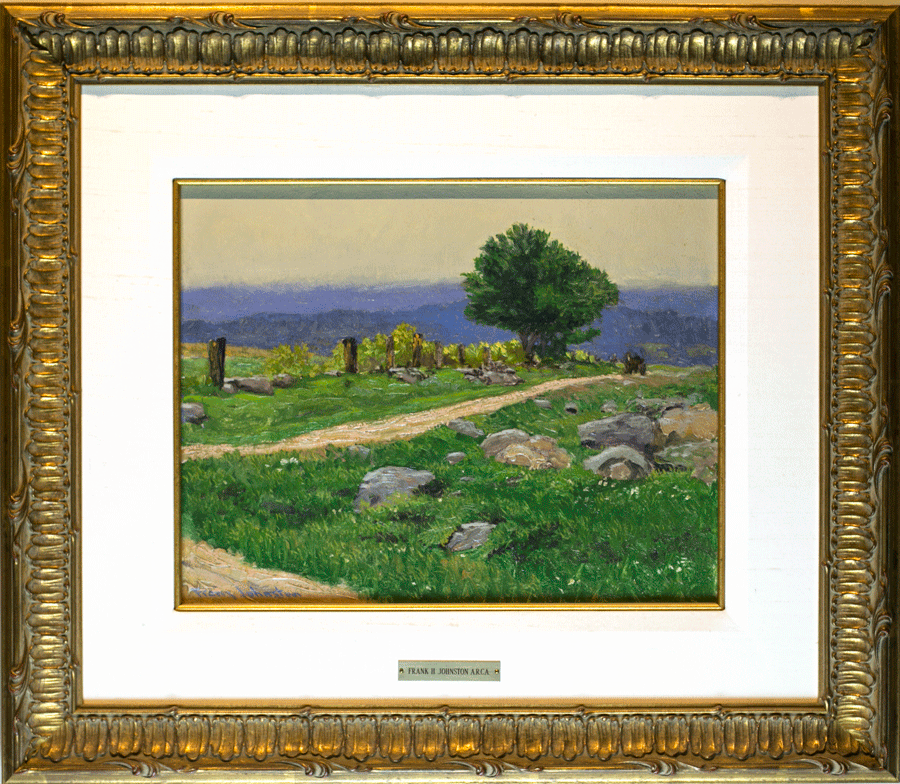Franz Johnston
1888-1949
Francis Hans Johnston, known as Franz or Frank, apprenticed as a jewelry designer with Ryrie Bros. of Toronto in 1904. He studied during the evenings at the Central Technical School and the Ontario College of Art under William Cruikshank, Gustav Hahn, and G. A. Reid, while working as a commercial artist with Brigdens. In 1911 he worked at the commercial art firm Grip Limited in Toronto, where he met future Group of Seven members J.E.H. MacDonald, Arthur Lismer, and Franklin Carmichael. The following year, he went to Philadelphia to study at the Pennsylvania Academy of Fine Art and then worked with the design firm, Carleton Studios in New York, returning to Toronto in 1915.
Johnston was commissioned to paint the home front during the First World War for the Canadian War Memorials Fund in 1918. During evenings and weekends he sketched Ontario’s Royal Canadian Air Force training camps including aircraft in various manoeuvres, some of which he developed into paintings. In the late summer of 1918, he travelled to the wilderness of the Algoma region near Sault Ste. Marie with artists Lawren Harris, MacDonald and art patron Dr. James MacCallum. Johnston’s work from these trips caught the interplay of light, colour and pattern in the woods in a decorative style, with an emphasis on flat planes of colour. In Fire-Swept, Algoma (1920) patches of blues and greens delineate the hills in the background, while the remains of a burnt forest are detailed in the foreground.
In May of 1920, a group of painters including Johnston exhibited as the Group of Seven for the first time at the Grange in Toronto and were hailed as developing a truly Canadian movement. In December 1920, Johnson mounted the first of many independent exhibitions at the Eaton’s of Canada Gallery where the press praised his handling of light. In 1921 he moved to Winnipeg to become the Principal at the College of Art and Director of the Gallery until 1924 when he returned to Toronto to teach at the Ontario College of Art, the same year that his formal associations with the Group of Seven ended.
Johnston was invited to Eldorado on Great Bear Lake, NWT, where he spent six months in 1939 sketching both the landscape and activities of northern aboriginal peoples. Upon his return, he settled in Wyebridge, Ontario, converting the village hall into a home and studio. He travelled regularly to northern Ontario to paint, and made his last trip into the Nipigon territory in 1946. During his last summers he painted pastoral subjects in Quebec, Baie St. Paul, villages in the Laurentians and the Ottawa Valley.
Source: Gallery.ca


